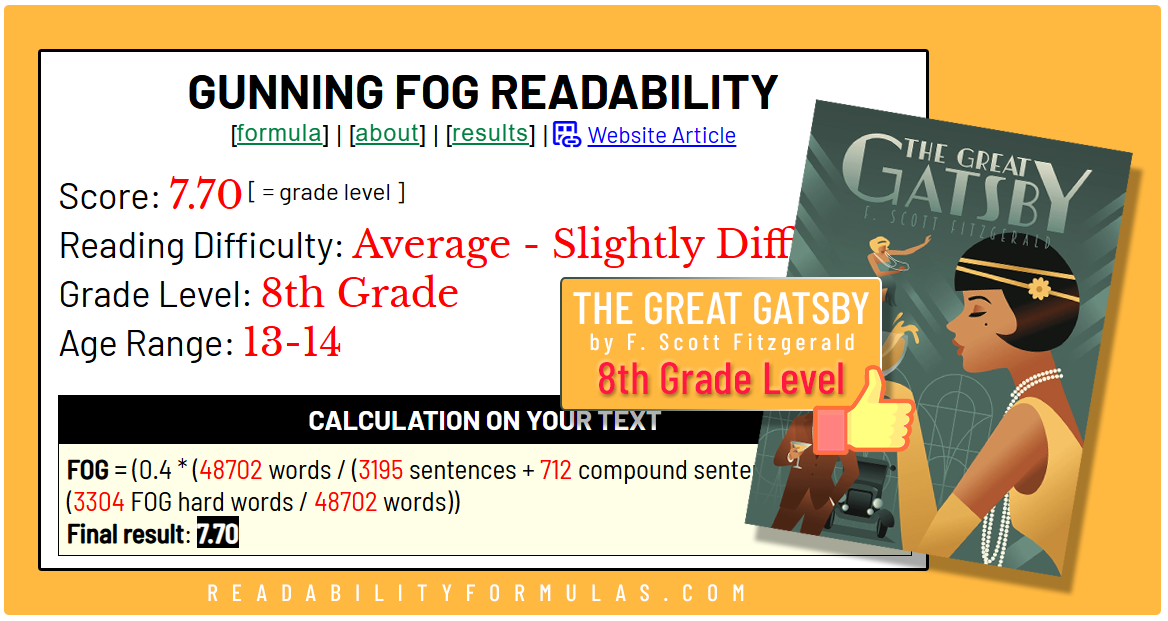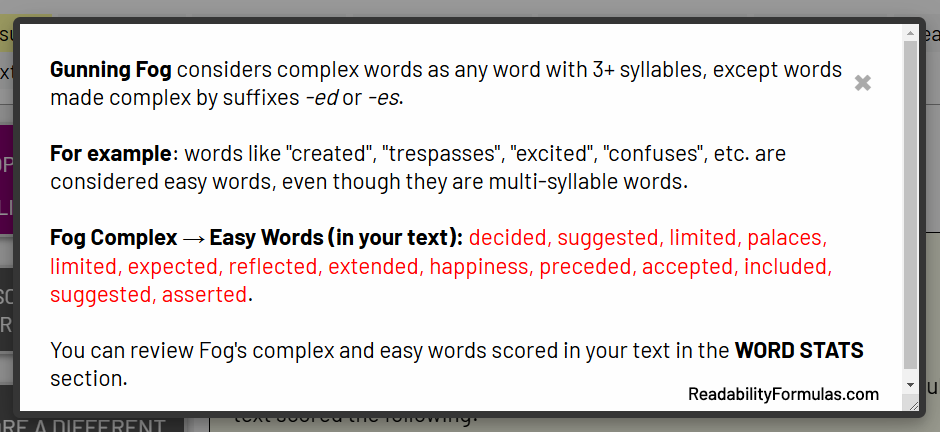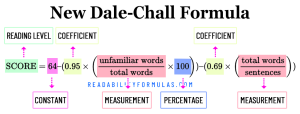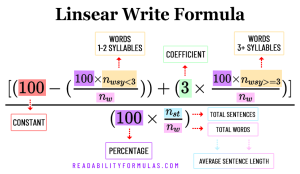 The English language dances with elegance and complexity. It invites us all to communicate, understand, and learn. Yet, its richness can sometimes create barriers. When words become too complex or sentences too long, the message may get lost. This is where the Gunning Fog Index steps into the dance.
The English language dances with elegance and complexity. It invites us all to communicate, understand, and learn. Yet, its richness can sometimes create barriers. When words become too complex or sentences too long, the message may get lost. This is where the Gunning Fog Index steps into the dance.
The Gunning Fog Index Readability Formula, or simply called FOG Index, is attributed to American textbook publisher, Robert Gunning, who graduated from Ohio State University. Gunning observed that most high school graduates were unable to read. Much of this reading problem was a writing problem. His opinion was that public and business reading materials were full of “fog” and unnecessary complexity.
Gunning realized the problem early on in his career and became the first to take the new readability research into the workplace. In 1944 Gunning founded a consulting firm specializing in readability. He spent the next few years testing and working with 60+ large city daily newspapers and popular magazines, helping writers and editors write to their audience. In 1952, Gunning published a book, The Technique of Clear Writing and created an easy-to-use Fog Index.
The index considers two factors. First, the length of sentences. Shorter sentences are easier to understand, and so they lower the fog. Second, it looks at the number of complex words. These are words with 3+ syllables that are uncommon English words. As the number of complex words goes up, so does the fog.
The tool then generates a score. This score tells us the grade level we need to understand a text. The higher the score, the higher the education level.
Why is this important? Because readability matters. Whether in classrooms, businesses, or newsrooms, clear communication paves the way for understanding. It removes barriers. It invites engagement. It fosters learning.
The formula is as follows:
Gunning Fog Index
$$\text{SCORE} = 0.4 \times \left( \left( \frac{\text{Words}}{\text{Sentences}} \right) + 100 \times \frac{\text{Complex Words}}{\text{Words}} \right)$$
Where:
- Words = Total number of words in the text.
- Sentences = Total number of sentences in the text.
- Complex Words = Words with three or more syllables, excluding proper nouns, familiar jargon, or compound words.
To measure sentence length, the index counts the number of words per sentence. It finds the average—a simple sum divided by the total number of sentences.
Next, the index considers complex words. But what makes a word complex? For the Fog Index, it’s all about syllables. Words with three or more syllables count as complex. Yet, there are exceptions. Proper names (like “Baltimore,” “Maryland,” “Mrs. Madison,” etc.), simple compound words (like “sunflower” or “bookkeeper”), and words made complex by suffixes –ed or –es (like “created” or “trespasses”) do not count as complex.
In a passage from “The Great Gatsby” (above) Gunning Fog Index re-scored these “hard” words as easy ones.
To find the percentage of complex words, the index divides the number of complex words by the total number of words. Then it multiplies by 100 to get a percentage.
Finally, the Fog Index combines these two factors. It adds the average sentence length to the percentage of complex words. Then it multiplies the result by 0.4. The outcome is a number that represents the grade level needed to understand the text.
A score of 9 means a 9th grader could understand the text. A score of 12 requires a high school student’s reading level. A score above 17 suggests a university graduate level of comprehension.
The Fog Index uses a coefficient of 0.4 and a percentage of 100 to scale and adjust the readability score:
0.4: This scaling factor is applied to the result of the formula. It ensures the scale corresponds to the number of years of formal education needed to understand the text. Without this factor, the number would be much larger and misaligned with readability levels. 100: This number converts the proportion of complex words (those with three or more syllables) into a percentage.These values help balance the formula between sentence complexity (words per sentence) and word complexity (complex words per total words) to interpret scores as grade levels.
Gunning Fog scored THE GREAT GATSBY by American writer F. Scott Fitzgerald, at an 8th grade reading level, which is the reading level validated by teachers and literary specialists. You can see the results below.
(* FOG hard words =
hard words (3+ syllable words)
(minus) — words made hard by suffixes
(minus) — hard Proper Nouns
(minus) — simple compound words that are 3-syllables)
Applications of the Gunning Fog Index
This tool, simple yet powerful, finds its purpose in various fields.
- Teachers: Teachers use the Fog Index to pick books and plan lessons that challenge students. This helps students learn more effectively.
- Journalists: Journalists write articles that readers can easily understand with the help of the Fog Index. It guides them to shorten sentences and choose simpler words, allowing more people to grasp the news.
- Businesses: Businesses create clear and simple messages by using the Fog Index.
- Healthcare Professionals: Doctors and nurses use the Fog Index to ensure patients can understand health information. Clear communication helps people follow health instructions properly.
- Lawyers: Lawyers simplify legal documents by using the Fog Index. This makes it easier for people to understand important legal information.
- Government Agencies: Government agencies use the Fog Index to write clearer messages. They want everyone to understand new rules and safety tips easily.
- Technology and UX Designers: Tech companies use the Fog Index to create easy-to-follow instructions and clear guides. This helps users understand how to use software and websites better.
- Writers and Editors: Writers and editors rely on the Fog Index to ensure their work is easy to read. Whether writing books, articles, or website content, they use the Fog Index to make their writing clearer for everyone.
Limitations
Despite its wide-ranging applications, the Fog Index has limitations.
- The Fog Index does not consider the nuances of language and content context. All words of three syllables or more are scored complex, even when they are commonplace. Words like “unfortunately” or “beautiful” are common in everyday language, yet the Fog Index marks them as complex due to their syllable count. This leads to higher text complexity.
- The Fog Index’s reliance on sentence length as a measure can also mislead. It views shorter sentences as inherently simpler. Yet, a short sentence filled with dense jargon may prove much harder to understand than a longer sentence written in plain English.
- The Fog Index does not account for the structure of a sentence. A sentence with multiple clauses and parentheses might be more difficult to understand than a longer but straightforward sentence. The Index’s sentence length over structure may underestimate complexity in some cases.
- It does not consider reader familiarity. A text might use simple language and short sentences, but if it discusses a specialized or unfamiliar topic, readers may struggle to comprehend it.
- It fails to consider cultural and regional differences. A word considered complex in one culture might be commonplace in another. Likewise, a short sentence might be more difficult to understand if it uses region-specific idioms or references.
These limitations remind us that the Fog Index is not a standalone solution. It works best in tandem with good judgment and knowledge of the target audience. It serves as a guide, not an absolute rule.
You can score your text using the Gunning Fog Index, along with other popular formulas, with our Average Reading Level Consensus Calc.
Scott, Brian. “The Gunning Fog Index (or FOG) Readability Formula.” ReadabilityFormulas.com, 7 Oct. 2024, https://readabilityformulas.com/the-gunnings-fog-index-or-fog-readability-formula/.








